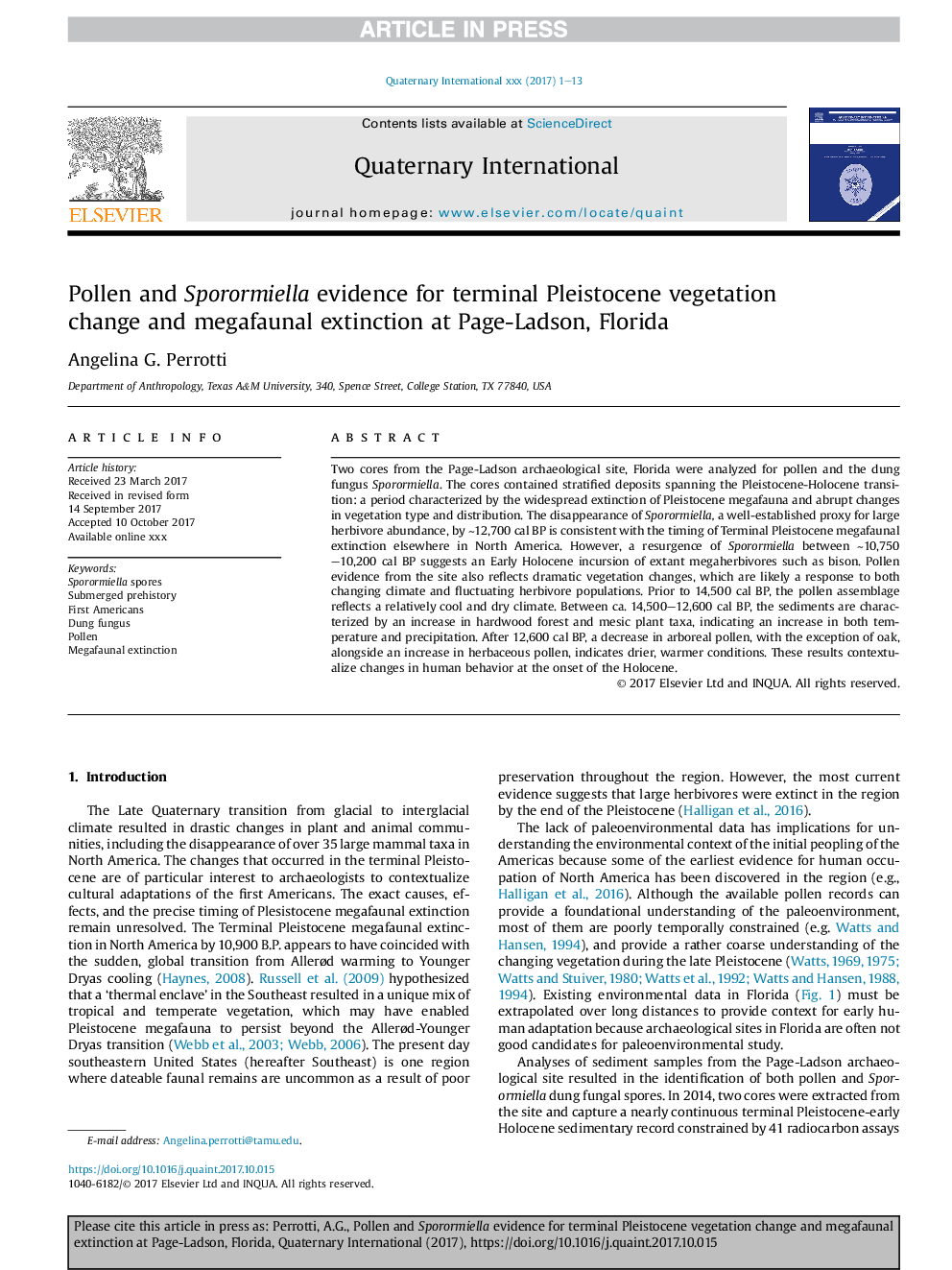| کد مقاله | کد نشریه | سال انتشار | مقاله انگلیسی | نسخه تمام متن |
|---|---|---|---|---|
| 7450655 | 1484053 | 2018 | 13 صفحه PDF | دانلود رایگان |
عنوان انگلیسی مقاله ISI
Pollen and Sporormiella evidence for terminal Pleistocene vegetation change and megafaunal extinction at Page-Ladson, Florida
دانلود مقاله + سفارش ترجمه
دانلود مقاله ISI انگلیسی
رایگان برای ایرانیان
کلمات کلیدی
موضوعات مرتبط
مهندسی و علوم پایه
علوم زمین و سیارات
زمین شناسی
پیش نمایش صفحه اول مقاله

چکیده انگلیسی
Two cores from the Page-Ladson archaeological site, Florida were analyzed for pollen and the dung fungus Sporormiella. The cores contained stratified deposits spanning the Pleistocene-Holocene transition: a period characterized by the widespread extinction of Pleistocene megafauna and abrupt changes in vegetation type and distribution. The disappearance of Sporormiella, a well-established proxy for large herbivore abundance, by â¼12,700Â cal BP is consistent with the timing of Terminal Pleistocene megafaunal extinction elsewhere in North America. However, a resurgence of Sporormiella between â¼10,750-10,200Â cal BP suggests an Early Holocene incursion of extant megaherbivores such as bison. Pollen evidence from the site also reflects dramatic vegetation changes, which are likely a response to both changing climate and fluctuating herbivore populations. Prior to 14,500Â cal BP, the pollen assemblage reflects a relatively cool and dry climate. Between ca. 14,500-12,600Â cal BP, the sediments are characterized by an increase in hardwood forest and mesic plant taxa, indicating an increase in both temperature and precipitation. After 12,600Â cal BP, a decrease in arboreal pollen, with the exception of oak, alongside an increase in herbaceous pollen, indicates drier, warmer conditions. These results contextualize changes in human behavior at the onset of the Holocene.
ناشر
Database: Elsevier - ScienceDirect (ساینس دایرکت)
Journal: Quaternary International - Volume 466, Part B, 18 February 2018, Pages 256-268
Journal: Quaternary International - Volume 466, Part B, 18 February 2018, Pages 256-268
نویسندگان
Angelina G. Perrotti,